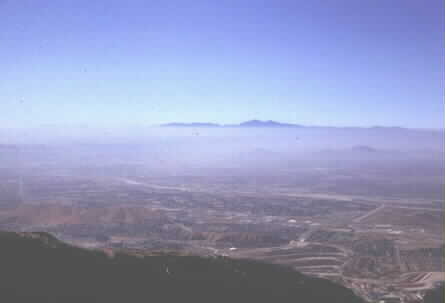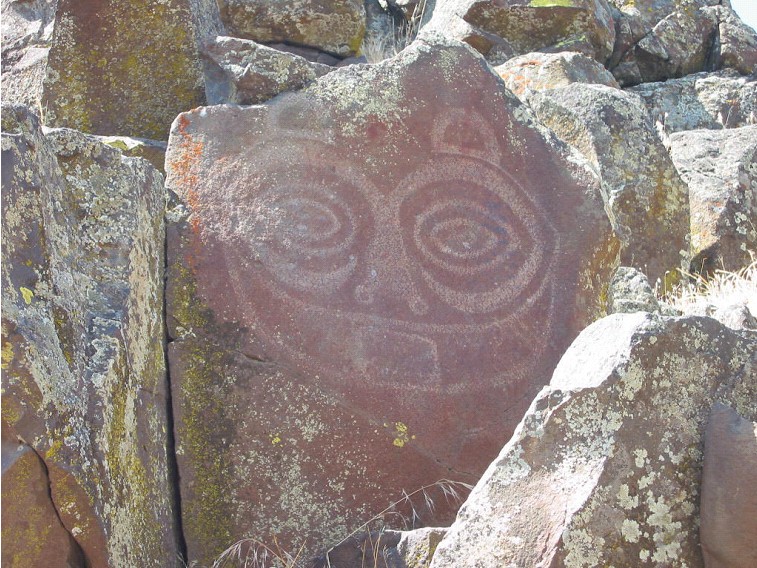
Southern California and California's Central Valley are among the most heavily polluted areas in North America. Ozone,
acidic gases and particulates are transported long distances to forests of the central and southern Sierra Nevada and the
transverse mountain ranges of southern California resulting in adverse impacts on air quality, visibility, water quality,
and forest health.
Our mission is to develop a basic understanding of the effects of air pollutants and
climatically-driven changes on forested ecosystems to aid management to sustain and
improve forest health.

Upcoming Events

|
22nd International Meeting for Specialists in Air Pollution Effects on Forest Ecosystems
FORESTS UNDER ANTHROPOGENIC PRESSURE - EFFECTS OF AIR POLLUTION, CLIMATE CHANGE AND URBAN DEVELOPMENT
September 10-16, 2006 in Riverside, California
Read all about it at www.fs.fed.us/psw/iufro.
|
Hot Topics
Nitrogen and Sulfur Deposition in the Eastern Columbia River Gorge National Scenic Area
The Columbia River Gorge National Scenic Area, located along the Oregon/Washington border, is an area highly valued for its scenic, cultural, and natural resources. The Scenic Area is a mixture of Forest Service, BLM, state, and private lands, and is administered by the US Forest Service. Prized for its dramatic scenic vistas, the Columbia River Gorge (CRG) has become a conduit of air pollution transport from emissions sources located within and to the west and east of the gorge.

| The potential acidity and excess nitrogen content of the atmospheric deposition in the CRG has raised concerns that protected cultural resources, particularly Indian rock art, are being harmed and over time will deteriorate from winter immersion in this polluted air mass.
|
Reports of changes in the chemistry and community composition of lichens indicates other adverse ecosystem effects are occurring as a result of atmospheric deposition. The polluted air masses that are transported through the CRG are believed to be responsible for an air pollution signature seen in the lichen tissue samples and lichen species community shifts.
With the cooperation of researchers at the Riverside Fire Lab (Pacific Southwest Research Station) and the Air Resources Program in Region 6 of the USDA Forest Service, a study was initiated during the winter wet season of 2003-2004 to determine the level of nitrogen, sulfur and acidic deposition occurring in precipitation, throughfall, fog and cloudwater.
Final Report to the USDA Forest Service, Region 6 Air Resources Program (crgnsa_final_report.pdf, 2MB)
Links:
USDA Forest Service, Region 6, Columbia River Gorge National Scenic Area
USDA Forest Service, Region 6
USDA Forest Service, PNW Air Resource Program
USDA Forest Service, R6 Air Quality Biomonitoring
USDA Forest Service, National Lichen & Air Quality Database and Clearinghouse
Critical Loads
Critical Load: the concentration of air pollution [loading rate, e.g., kg/ha/yr] above which a specific deleterious effect may occur. A critical load or concern threshold value should:
• protect the most sensitive AQRVs (Air Quality Related Values);
• be based on the best science available;
• ensure that no unacceptable change occurs to the resource.

The use of Critical Loads and Levels for monitoring and control of air pollutants is well established in Europe (ICP-Forests) and Canada. Development of critical loads and thresholds in the U.S. is vital if we are concerned about the current and future deposition levels of nitrogen, sulfur, metals and other toxic substances to aquatic and terrestrial ecosystems.
To that purpose we have hosted a series of meetings to facilitate the exchange of ideas and methodologies between the European and North American scientists and managers and to develop methodologies for using the CL concept in the U.S. The most recent meeting took place on February 16-18, 2005 at the Historic Mission Inn in Riverside, California. Link to Report and Presentations
We are also participating in the Kings River Project. The objective of this project is to better understand the spatial distribution of ozone, nitric acid, ammonia and atmospheric N deposition that affects forest health and water quality in the Kings River watershed. This project is one of two demo sites in the U.S. for Critical Load methodology.[link to Kings River Demo page (coming soon)]
Cooperators for this Project are:
- • Region 5 Air Program, Trent Proctor & Ricardo Cisneros
- • PSW, Riverside Fire Lab, A. Bytnerowicz, et al.
- • PSW, Fresno Lab, Carolyn Hunsaker
- • Oregon State University, S. Jovan
RESEARCH EMPHASIS AREAS
Nitrogen pollution:
Chronic high N deposition to the normally N-limited systems of California is a major ecological perturbation with unknown long term effects.
More about nitrogen pollution, deposition, and cycling
Air Pollution and Global Change:
We need a basic understanding of tree response to atmospheric pollutants and drought stress.
More about air pollution and global change
Air Monitoring: Monitoring of air pollution concentrations, deposition, and effects is needed to determine the extent and magnitude of pollutant deposition in areas at risk and determine forest stand structure and composition response.
More about air and effects monitoring
Smoke/Visibility/Regional Haze
Smoke Issues:
There is a critical need to determine whether prescribed burns comply with local and regional air quality regulations, and if not, what conditions lead to non-compliance. More about smoke research
Visibility/Regional haze:
Management of visibility/regional haze is an important issue facing the Forest Service, especially in Class 1 Wilderness areas.
|

|
The Air Pollution and Global Change Impacts on Western Forest
Ecosystems with its primarly
location at the Forest Fire Laboratory in Riverside, California
is a research unit of the Pacific Southwest Research Station,
headquartered in Albany, California. The unit and research station are part of the Forest
Service, U.S. Department of Agriculture.
|